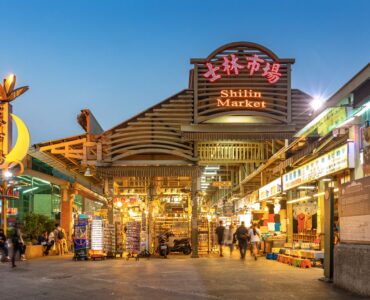Nestled in West Africa, Benin is a country of close to 14 Million people with profound cultural diversity and historical depth. This post delves into the intricacies of Benin’s languages, culture, and the unique aspects that make this country a fascinating study in African diversity and resilience.
Languages: A Linguistic Tapestry
One of the most remarkable aspects of Benin is its linguistic diversity. The official language is French, a legacy of colonial times, which serves as a lingua franca uniting the nation’s diverse ethnic groups. However, the true linguistic richness of Benin lies in its multitude of indigenous languages. Fon and Yoruba are predominant in the south, while in the north, languages such as Bariba, Dendi, and Fulfulde are widely spoken. This polyglot nature is not just a linguistic phenomenon but a testament to the country’s rich tapestry of cultures and ethnicities.
Cultural Richness: Traditions and Modernity
Beninese culture is a vibrant blend of tradition and modernity. This is evident in the country’s music, dance, and art. Traditional music genres like Agbadja and Tchinkoume are still prevalent and celebrated, often accompanied by intricate dances that tell stories of the past and present. In urban areas, modern music styles blend these traditional rhythms with contemporary beats, showcasing the adaptive nature of Beninese culture.
Art is another sphere where Benin’s heritage shines. The country is famous for its bronze sculptures and intricate beadwork, with skills passed down through generations. The artistry displayed in these works reflects a deep understanding of both aesthetic beauty and cultural significance.
Historical Significance and Heritage Sites
Benin’s history is rich and complex. It was once home to the powerful Dahomey Kingdom, renowned for its wealth and military prowess, including the famed female warriors, the Amazons of Dahomey. The country’s historical significance is also marked by its unfortunate role in the transatlantic slave trade. Sites like Ouidah’s ‘Door of No Return’ offer a poignant reminder of this dark chapter.

Today, several historical sites in Benin are recognized for their cultural importance. The Royal Palaces of Abomey, a UNESCO World Heritage site, offer insight into the grandeur of the Dahomey Kingdom. The city of Porto-Novo, with its unique Afro-Brazilian architecture, tells a story of cultural fusion and resilience.
Religious Diversity: Coexistence and Harmony
Religion in Benin is a mirror of its cultural diversity. Christianity and Islam are prevalent, but traditional African religions hold a significant place in the hearts of many Beninese. The veneration of ancestors and the worship of deities like Vodun are integral to the spiritual life of the country. This religious diversity is a model of coexistence, with mutual respect and harmony being the norm.
Cuisine: A Flavorful Journey
Beninese cuisine is as diverse as its people. Staple foods include corn, yams, and beans, often accompanied by flavorful sauces and stews. A notable dish is ‘Pâte,’ a dough-like meal made from corn or cassava flour, typically served with tomato-based sauces. Fish and chicken are common proteins, reflecting the country’s coastal geography and agricultural practices. The blend of spices and cooking techniques makes Beninese cuisine a delightful experience for any food enthusiast.
Conclusion: A Country of Unparalleled Diversity
Benin, with its rich array of languages, traditions, and histories, is a testament to the vibrancy and resilience of African cultures. It stands as a beacon of diversity, showcasing how different ethnicities, languages, and beliefs can coexist and enrich a nation’s tapestry. Exploring Benin is not just a journey through a country but an immersion into a world where history, culture, and modernity blend seamlessly, offering lessons in unity, resilience, and the enduring power of heritage.
The Industries of Benin
Benin’s economy is significantly influenced by its agricultural sector, which is a major contributor to the country’s GDP and employment. This sector accounts for approximately 29.4% of Benin’s GDP and employs around 38% of the workforce. The country is endowed with fertile land, and a third of its territory is suitable for agriculture. Key agricultural products include cotton and cashew nuts, which are also important export commodities.
In addition to agriculture, Benin’s economy benefits from other sectors:
- Agroindustry: This sector is expanding and contributes significantly to the country’s economic growth. It involves the processing of raw agricultural products into finished goods.
- Construction: The construction sector in Benin is growing, driven by increased infrastructure spending and development projects.
- Port-Related Activities: Benin’s geographical location along the coast of West Africa makes port activities crucial. The Port of Cotonou is a significant hub for not only Benin but also for the landlocked countries in the region.
- Reexport Trade: Benin is known for its reexport trade, particularly with its larger neighbor, Nigeria. This includes the reexport of imported goods and commodities like secondhand cars and rice.
- Informal Economy: A significant portion of Benin’s workforce is engaged in the informal economy. This includes a variety of small-scale, unregulated, and often unregistered economic activities.
- Services Sector: The tertiary or services sector, including retail, transport, and other services, plays an important role in Benin’s economy.
Benin’s economy also depends on the export of unprocessed agricultural products and the reexport of imported goods to neighboring countries, especially Nigeria. Maintaining macroeconomic stability and addressing vulnerabilities in its growth model are essential for sustaining economic recovery in Benin.






Fascinating journey through the richness of Benin portrayed by GTS Translation’s blog! The exploration of its diverse culture, languages, and heritage is both educational and captivating. A well-crafted piece that honors the mosaic of Benin. Kudos to GTS Translation for shedding light on this cultural tapestry, fostering appreciation and understanding. An insightful read for those eager to discover the depth of Benin’s heritage
Hi Excellent work putting this together! I question what AI will do in this space over the next five years.